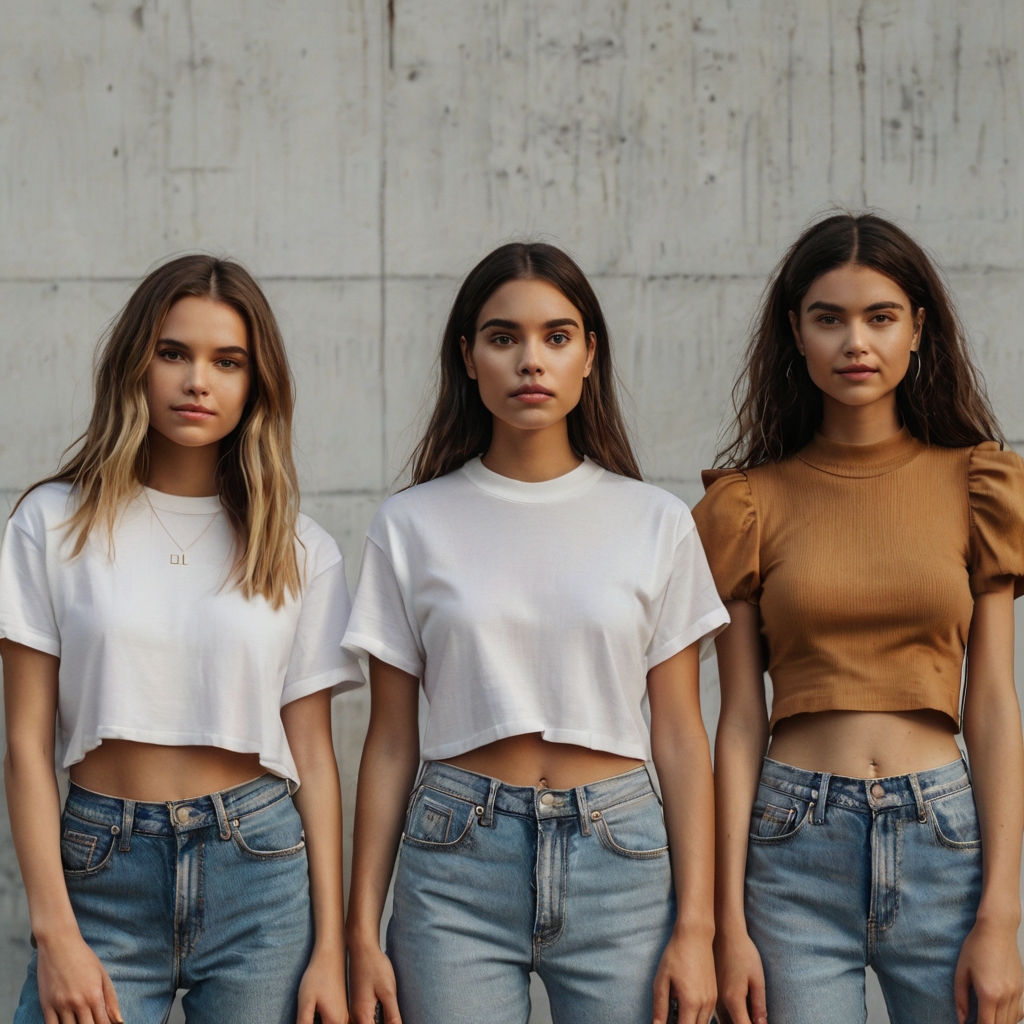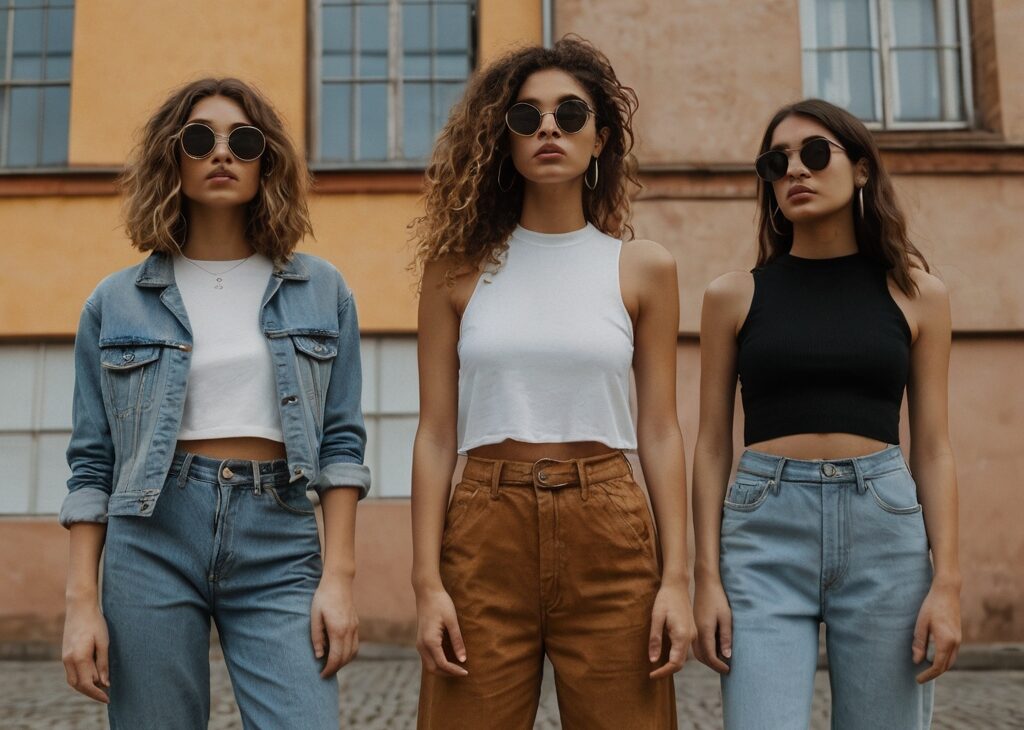Millennials’ clothing priorities have seen major changes as this influential generation continues to flex its economic muscle. People born between 1981 and 1996 represent one of the largest generations with serious buying power. Their style experience stands out, and many switched from skinny jeans to straight leg options around 2020.
The millennial clothing world keeps changing in 2025 and reflects broader consumer behavior changes. Pinterest searches for ‘baggy gym outfits’ have jumped over 400 percent, mostly from younger shoppers. Leggings dropped from 47 percent of activewear bottoms at major retailers in 2021 to just 32 percent. These changes in millennial fashion trends reach into professional settings too. Return-to-office mandates have created a just need for workwear that is “timeless but trendy, customized but affordable, and ideally, environmentally responsible”. Customer ratings and reviews strongly influence millennials’ clothing choices, and they tend to shop online rather than in stores. This piece explores millennials’ actual shopping destinations in 2025, from clothing and shoes to groceries and home décor.

Where Millennials Shop for Clothes in 2025
Millennial shopping habits in 2025 show a clear pattern that combines quality, environmentally responsible practices, and value. These young consumers look for brands that line up with their values and offer stylish options they can wear to work or play.
Anthropologie: Feminine and boho staples
Millennials love Anthropologie for its free-spirited bohemian style. The brand’s collection shows off detailed patterns and loose fits that create an effortless yet sophisticated look. Their feminine tops with flowing shapes work great with wide-leg trousers or tiered skirts. These versatile outfits suit both casual outings and social events.
Anthropologie markets itself as an upscale bohemian clothing brand. Prices usually range from $50 to $170, though some items can cost up to $500. Money-smart millennials often check secondhand platforms where used Anthropologie clothes start at just $4.99.
J.Crew: Timeless preppy essentials
J.Crew leads the preppy style market with classic button-downs, quality sweaters, and tailored blazers. Millennials love their cashmere collection because these versatile basics last. The brand’s fitted blazers add “preppy sophistication” to any outfit. Their cotton pajamas have even caught the attention of notable authors.
Creative directors Olympia Gayot and Brendon Babenzien helped J.Crew keep its spot as the go-to brand for timeless wardrobe pieces that work well from office to weekend. People keep coming back because J.Crew balances tradition with modern style, offering clean shapes with fun touches here and there.
Everlane: Minimalist and sustainable basics
Everlane has become a millennial favorite thanks to its honest approach to production and reasonable pricing. This direct-to-consumer brand focuses on high-quality basics—t-shirts, cashmere sweaters, silk blouses, and crisp poplin shirts.
The brand has improved its environmental efforts by a lot, going beyond social responsibility. By 2025, Everlane uses only organically farmed silk. They dye and wash pieces using 100% recycled water and renewable energy.
Reformation: Eco-conscious fashion-forward pieces
Reformation stands out as the biggest sustainable fashion success story among millennials. Since its start in 2009, the brand has grown to over 2.3 million Instagram followers. Celebrities like Taylor Swift, Rihanna, and Emily Ratajkowski love their clothes.
The brand met its 2024 goal of using 100% recycled, regenerative, or renewable materials. Their quarterly sustainability reports show amazing transparency, openly discussing environmental effects and ways to improve. Reformation’s style mixes modern looks with nostalgic touches, creating timeless pieces that become wardrobe favorites.
Target: Affordable and inclusive fashion
Target has become a millennial fashion hotspot through its exclusive in-house brands. The store offers sizes from 0 to 26W, making clothes available to everyone. Their collections, including Wild Fable and Original Use, feature modern styles under $40.
A National Retail Federation study shows young adults want brands that reflect who they are, and 98% still shop in physical stores. Target responded by creating digital hubs with user-generated content that inspires shoppers and helps them feel confident about their purchases. This mix of good prices, inclusivity, and digital involvement has earned Target a loyal millennial following in today’s competitive fashion world.

Where Millennials Buy Shoes Today
Shoes play a vital role in how millennials express their style in 2025. This generation looks for brands that blend trendy designs with everyday comfort. Millennials spend money on shoes they can wear anywhere and that last longer than fast-fashion alternatives.
Marc Fisher and Sam Edelman: Stylish yet practical
Marc Fisher, a 2-year old brand, stands out as millennials’ favorite for dressy footwear like boots and heels. The brand ranked fourth among premium footwear names in early 2023 and brought in $2.90M in Media Impact Value from 702 placements. Their numbers dropped 23% from last quarter, but each placement’s average MIV grew by 8%, showing stronger individual content performance.
Sam Edelman continues to fascinate millennial buyers with designer shoes that mix elegance and comfort. Their brand pulled in $9.50M in Media Impact Value across 2,200 placements, solidifying their market position. Deals like an extra 20% off sale items with code “20MORE” attract budget-conscious millennials. Both brands create shoes that look current while working great for daily use.
Madewell and J.Crew: Quality meets comfort
Madewell wins millennial customers with stylish, easy-to-wear casual shoes. Their sneakers come with special “MWL Cloudlift insoles” perfect for wearing all day. The brand offers a detailed selection of sandals, espadrilles, boots, flats, and heels that work for any event.
Style doesn’t take a back seat to comfort here. Seasonal collections blend current trends with practical design. Their sneaker line ranges from classic white canvas to modern platform styles. J.Crew adds to these options with quality shoes that pair naturally with clothes from both brands.
Designer picks: Veronica Beard and Loeffler Randall
Millennials choose high-end brands like Veronica Beard and Loeffler Randall for special events or long-term investments. Veronica Beard’s collection showcases expert craftsmanship and flexibility, using premium materials designed “through all of life’s moments”. They sell everything from elegant heels and ballet flats to refined casual sneakers.
Loeffler Randall managed to keep strong market numbers, earning $3.90M in Media Impact Value from nearly 1,000 placements. The brand does particularly well in the US, where it earned $3.10M in MIV. Their success comes from designs that mix artisan quality with modern style.
These designer brands cost more, but millennials see them as smart investments. Many prefer buying fewer, better shoes from these trusted names instead of lots of cheaper options. This matches millennials’ broader shift toward mindful shopping in their clothing choices.
Grocery Stores Millennials Actually Love
Millennials show similar priorities in their grocery shopping as they do with clothes and shoes. They look for value, great experiences, and brands that match their values.
Trader Joe’s: Affordable and fun finds
Trader Joe’s has won millennial hearts, with 62% giving the chain positive reviews. The store takes a unique path by skipping coupons, sales, and loyalty programs. They focus on keeping prices low every day. Rather than stocking big brands, their shelves feature unique store-brand items that often gain cult status.
Products like Everything But The Bagel Seasoning, Mandarin Orange Chicken, and Cauliflower Gnocchi have huge fan bases. Shoppers keep coming back for affordable produce, seasonal items, and a surprisingly good wine selection. The store’s Hawaiian-themed displays, creative chalkboards, and what some call a “subtle hippie esthetic” make shopping fun.
Whole Foods: Wellness-focused shopping
Whole Foods Market stands as a 36.5-year old quality leader among grocery stores, according to YouGov’s 2025 rankings. This premium image strikes a chord with millennials – 80% value quality at the time they shop for food, and nearly 70% don’t mind paying extra for better quality.
Food sourcing transparency matters to more than 65% of millennials, especially with fresh meat and seafood. Label reading has increased among 70% of millennials in the past five years. About 60% worry about additives and growth hormones. Half of them now buy more organic products than before.
ALDI and Costco: Budget-friendly bulk buys
Young shoppers, especially Gen Z, have embraced ALDI. About 22% say they last bought groceries at this German-founded chain. The store’s simple approach – quality food, quick service, and low daily prices – draws value-minded millennials. ALDI ranks second in Value with a 38.6 score.
Costco also draws millennial shoppers with bulk options and perceived value, scoring 35.1 for Value. Small households might find the warehouse model challenging. Many millennials work around this by buying non-perishables, checking unit prices against other stores, and watching for deals ending in .97.
Target: One-stop shop for everything
Target has become a go-to grocery spot for millennials, ranking second in quality with a 35.4 score. The store’s appeal goes beyond food – millennials love that they can get everything in one place, which helps when they need to limit store visits.
The company makes shopping easy across all channels. Target’s CEO Brian Cornell points out that parents often start in kids’ clothes, move to adult sections, and finish in food and drinks. This shopping style fits perfectly with millennials who want to save time.
The Good & Gather grocery brand has taken off, hitting $1 billion in sales since launching in 2019. Target aims to be “the easiest retailer to shop,” which appeals to millennials looking for simple ways to get quality products at good prices.
Home Decor and Furniture Stores Millennials Prefer
Millennial home décor choices go beyond clothing and footwear to show their values of authenticity, sustainability, and quality. Their living spaces have evolved into personal fashion statements, and they lean toward retailers that mix great looks with ethical practices.
West Elm and CB2: Modern and mid-century vibes
West Elm has won millennial hearts with its warm, modernized mid-century esthetic that feels fresh yet timeless. The brand’s steadfast dedication to sustainability strikes a chord with eco-conscious millennial shoppers – 60% of products support sustainability initiatives and 35% of wood furniture is FSC certified. Millennials see West Elm as perfect for “modern design for the whole home” and love how collections create cozy environments while keeping their modern organic appeal.
CB2, Crate & Barrel’s younger sibling, brings high-design furniture and home décor collections that range from contemporary pieces to vintage icons. Since 2000, CB2 has focused on helping millennials “design covet-worthy spaces at an approachable price point”. The brand delivers trendy accent furniture and décor through strategic collaborations with top designers.
Anthropologie: Unique and artsy pieces
Anthropologie has built a loyal millennial following with its distinctive home offerings that match its clothing style—vibrant, colorful, and textural-bohemian with organic influences. Millennials head over to this store for “unique, showstopper pieces” worth the splurge, from statement curtains to artisanal kitchenware. They love Anthropologie’s smaller decorative pieces that add character to their spaces.
Article and Crate & Barrel: Quality with style
Crate & Barrel remains a “millennial staple” with quality, middle-range furniture that outlasts changing trends. The brand’s clean esthetic, with neutral color palettes and minimalist designs, fits perfectly with the “quiet luxury” movement millennials love. Since 1962, Crate & Barrel has been a trusted name for quality home goods and a wedding registry favorite.
Target: Budget-friendly seasonal updates
Target has become the place to go for stylish yet affordable home décor with its designer collaborations and in-house brands. Millennial shoppers appreciate Target’s wide selection of home décor options, from lighting and wall art to decorative accents and seasonal items. New trends arrive through partnerships like Hearth & Hand with Magnolia, Threshold designed with Studio McGee, and Opalhouse designed with Jungalow. These collections bring high-end looks at budget-friendly prices, making Target ideal for space updates without breaking the bank.
What Influences Millennial Shopping Decisions
Millennial purchasing behavior reveals much more than their preferred brands and shopping locations. Their decision-making process shows how technology and social awareness have transformed shopping habits.
Online reviews and customer photos
Reviews have an unmatched influence on how millennials shop. The numbers tell an interesting story – 99.9% of millennials read reviews for online purchases. Eight out of ten won’t buy anything without checking reviews first. They take it a step further – 97% actively look for negative reviews to make better-informed choices.
Millennials stand out from other generations in how they use reviews. About 85% look specifically for websites with reviews, which is higher than Gen X (76%) and Boomers (70%). Nearly half won’t touch products that don’t have reviews, compared to 42% of Gen X and 39% of Boomers. They see negative reviews as vital decision-making tools. In fact, 47% become suspicious when they see nothing but five-star ratings.
Brand values and sustainability
Millennials spend money on brands that match their personal values. About 74% buy from companies that support causes they care about, and 48% actively seek out brands behind social initiatives. This generation shows they’re willing to pay more for eco-friendly products – 48% compared to just 16% of Baby Boomers.
Social media and influencer recommendations
Social connections shape how millennials buy products. More than half (56%) have bought something after seeing it in their social media feed. The social proof matters – 65% would buy items their friends recommend on social media, while only 40% of Baby Boomers would do the same.
In-store experience vs. online convenience
Shopping preferences create a clear generational divide. Most millennials (58%) reach for their phones to make purchasing decisions. They find it easier to connect with retailers digitally than visit stores – 61% say so. Even when they’re in stores, 53% would rather look up product details on their phones than talk to staff. This shows how deeply technology has become part of their shopping habits.
Summing all up
Millennials’ shopping priorities show they value quality, environmental responsibility, and convenience in everything they buy. These consumers look for brands that line up with their personal values and provide stylish options that naturally fit different parts of their lives. Target has become the perfect millennial retailer. It shows up in many categories from clothing to home décor and gives this generation the one-stop shopping experience they love.
These shoppers really do their homework before buying anything. Customer reviews, photos, and social validation shape their buying habits by a lot. Most millennials read reviews while shopping online, and many won’t buy products without this vital feedback.
Environmental responsibility is the life-blood of millennial buying habits. Brands like Reformation and Everlane have grown by being open about their production and green initiatives. These buyers are willing to pay more for products that match their environmental values.
Mobile convenience and meaningful store experiences define how millennials shop in 2025. While 58% prefer using mobile devices to make buying decisions, physical stores with unique atmospheres still draw loyal customers. Trader Joe’s distinctive shopping environment proves this point perfectly.
Millennial fashion has changed by a lot since 2020. Straight leg options have replaced skinny jeans, and work clothes now mix timeless pieces with trendy details. This change goes beyond clothes to their homes, which millennials see as extensions of their personal style.
Successful retailers know millennial consumers just need more than products. They want real experiences, honest practices, and smooth connections between digital and physical shopping. Brands that understand these priorities will keep winning millennial loyalty in this competitive retail world.
Here are some FAQs about the millennial clothing:
Do millennials care about sustainable fashion?
Millennial clothing trends show a strong preference for sustainable and ethical fashion choices. Many millennial clothing brands prioritize eco-friendly materials and transparent supply chains. This focus on sustainability has become a defining characteristic of millennial professional clothing and casual wear alike.
What is millennial core fashion?
Millennial core fashion blends nostalgia with modern comfort, featuring items like skinny jeans and oversized blazers. The millennial clothing style often mixes high and low fashion, pairing investment pieces with affordable basics. Key elements of millennial clothing trends include athleisure wear and versatile wardrobe staples.
What is grandmillennial style clothing?
Grandmillennial style clothing combines vintage-inspired pieces with contemporary millennial clothing aesthetics. This millennial clothing trend incorporates floral prints, ruffles, and traditional fabrics in modern silhouettes. It represents a bridge between millennial professional clothing preferences and more classic, timeless designs.
What is the meaning of millennial style?
Millennial style represents a shift toward comfort, versatility, and individuality in fashion choices. Millennial clothing brands often focus on creating pieces that transition seamlessly from work to weekend. The millennial clothing style balances professional polish with personal expression and practicality.
Do Gen Z and Millennials value sustainability?
Both generations prioritize sustainability, though millennial clothing trends show more established eco-conscious shopping habits. Millennial clothing brands were early adopters of sustainable practices that Gen Z has since amplified. This shared value influences everything from millennial professional clothing to casual wear choices.
Is sustainable fashion overhyped?
While some criticize the sustainability movement, millennial clothing purchases demonstrate genuine commitment to ethical fashion. Many millennial clothing brands have built loyal followings through authentic sustainability efforts. The millennial clothing style increasingly reflects values beyond just aesthetics, including environmental impact.
How do millennials dress vs Gen Z?
Millennial clothing trends favor tailored fits and neutral palettes compared to Gen Z’s bold, oversized looks. While both generations embrace casual styles, millennial professional clothing maintains more traditional workplace appropriateness. Millennial clothing brands often focus on timeless pieces rather than fast-fashion trends.
What is the design style of Millennials?
Millennial design style in clothing emphasizes functionality, minimalism, and subtle branding. The millennial clothing aesthetic favors clean lines, versatile pieces, and quality over quantity. This approach extends from millennial professional clothing to casual wear, creating cohesive, intentional wardrobes.














